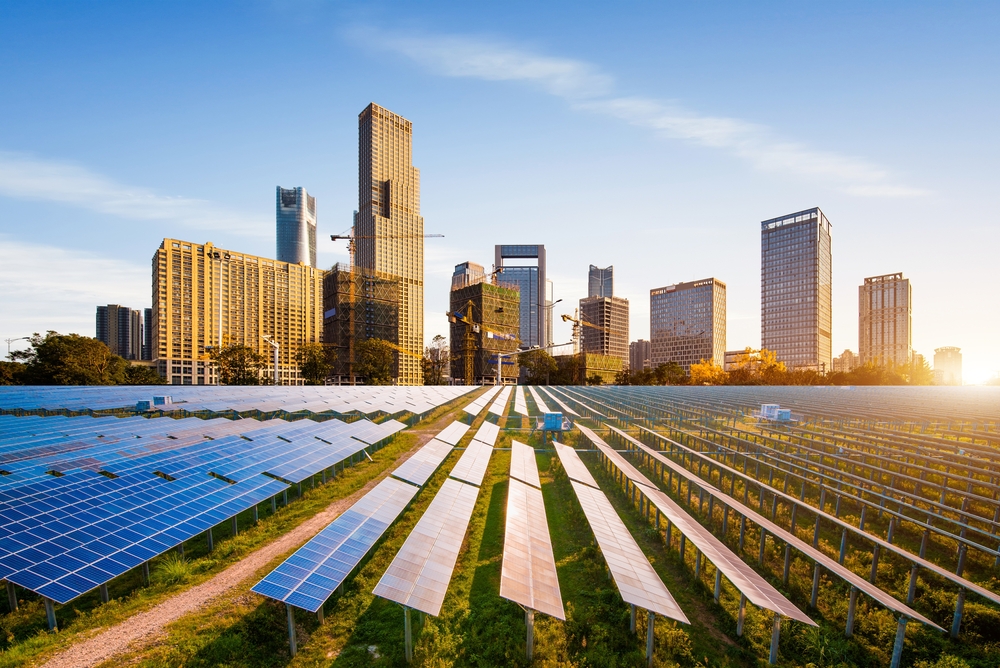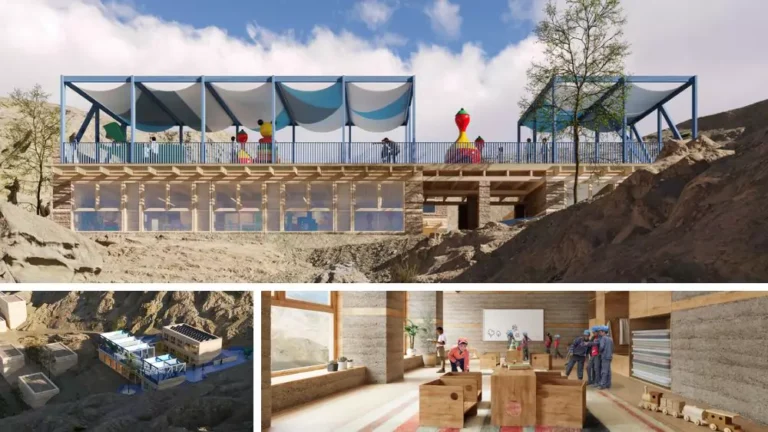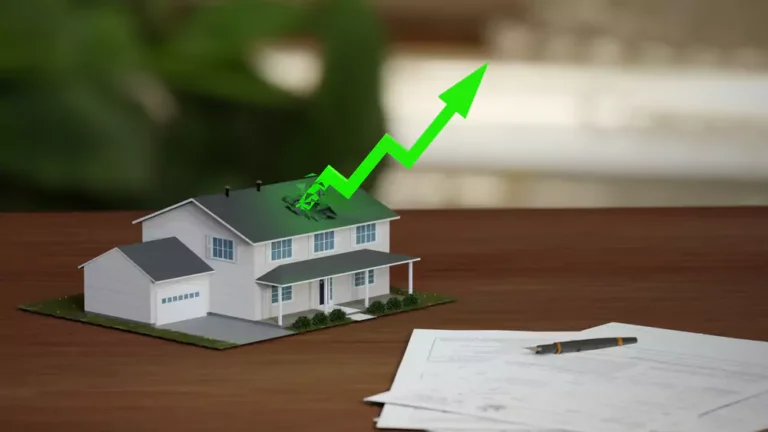Pursuing a career in sustainability paves a path for a green, resilient, inclusive property sector
This article is based on the Grounding Future Real Estate Influencers Session at the PropertyGuru Asia Real Estate Summit originally presented on 8 December 2021.
The Narrow Door Podcast Host Sam Oh speaks with World Bank Group’s Angelo Tan on his journey to get to where he is now at the IFC

Angelo Tan, Country lead for the Philippines, Climate Business, International Finance Corporation, World Bank Group opens up about his work at the International Finance Corporation (IFC) and how studying at the University of New South Wales made him understand the role of sustainability in the planning and developing stage with other “starchitects” and real estate professionals.
In this fireside chat, he also mentions various ways one can study in universities in East Asia and the Pacific, some of them for free, for those looking to get a job in real estate.
Sam: You are the perfect person to inspire others who are interested in starting a career in sustainability and how they can get educated and train for it. So let’s start with that — what is it exactly that you do and how did you get started?
Angelo: I work towards democratising green and resilient buildings for developing countries. Democratising, in this sense, means making green and resilient buildings much more accessible for everyone. This is key to my current work on EDGE green building certification and building resilience index, as well as to the work that I do in the Philippines and Indonesia.
When people hear your title or the kind of work that you do, they may find it intimidating, but you actually started from a very modest background, having come from La Union, a charming surfing town in the Philippines. Can you tell us how you got started in real estate development?
I was born and raised in San Juan, La Union. I went to a public elementary school and then attended high school and college in the same area. Then, I decided to go to Manila and work there. Fortunately, I found a job in real estate development.
How did you make the jump from commercial real estate to the sustainability side of things?
I initially started in real estate development — developing mixed-use townships, then commercial real estate, and also architecture. Working in the private sector for the longest time, I felt that a lot of what we were doing in terms of sustainability always took a step back to profit. There was a lot of emphasis on profit in the real estate industry. Then I realised that I needed to do something about it. I needed to upskill and learn more about the sustainable development of buildings. That’s when I decided to get a master’s degree in sustainability.
When you say that you felt like sustainability took a back seat to profit, did you mean that sustainability usually had to be sacrificed for the sake of profit?
Yes. That’s the conventional way of thinking, but I’m delighted to say that many businesses now have a greater awareness about sustainability and understand the triple bottom line approach, which combines profit, people, and planet. Many organisations nowadays realise that if they don’t make any effort to drive environmental sustainability, then their businesses won’t thrive.
Today, climate change remains a major concern globally. But because of lockdowns at the height of the pandemic, many people have seen the positive impact that staying indoors had on the environment. This was something that dawned on you, as well, when you had to do a mandatory two-week quarantine on your trip back from Sydney after you’ve finished your masters programme. Can you talk about that?
Being quarantined for long periods really makes you think. While quarantined, I thought about how small my apartment was and how unsustainable its design was. This made me look back on my childhood experience living in a very modest house, which featured some elements of vernacular architecture. It wasn’t what you would call a green home, but it did have many sustainable features that you don’t normally find in many houses nowadays.
In real estate, there has always been an emphasis on profit and maximising efficiencies that we’ve overlooked best practices associated with vernacular architecture, which was actually very sustainable. If we want to find a solution to climate change that will apply to the situation in the Philippines, then we need to look at vernacular architecture and implement sustainable practices that we’ve forgotten.
Vernacular architecture refers to the use of materials that are native to the country, are readily available, and using accessible technology, is that right?
Exactly. Vernacular architecture uses locally available materials and certain passive design technologies that manage how heat flows through a home. An example of its shading and natural ventilation principles can be seen at some models of the bahay kubo. They have pitched roofs and shading, and they’re made from locally available materials, and were, therefore, highly sustainable. And because they were built on stilts, they were also highly resilient to flooding. When we started to modernise and incorporated new technologies in designing and constructing buildings, we somehow forgot about all of these technologies, and I think we need to take a step back.
Related: Green crusade: The power of data to promote sustainable real estate
It’s fascinating that we’ve always had readily available sustainable materials and that we have been using them for years, yet we tend to think that sustainability is complicated and expensive. And with vernacular architecture, we get to integrate local cultural elements into our homes and buildings. It seems like a win-win situation.
I agree, and I think we have to go back to the definition of sustainable development, which is, essentially, meeting the needs of the present without compromising the future generations’ capability to meet their needs. If we consume too much now, then we are compromising our future and the future of our children. By using native materials, being more efficient in designing and operating our buildings, we can ensure a sustainable future for our children.
You seem like the perfect person to talk about “grounding future real estate influencers,” as well as the role of data-driven education in pivoting to a career in sustainability, intended for students and young leaders aspiring towards a green, resilient, and inclusive property sector. What can you advise them about the path they should take to have a career in sustainable development and what educational programmes are available to pursue it?
I think there are many paths to having this type of career. One way is to look at it through the lens of change management theory. According to that theory, there are different types of directed change: incremental, transitional, and transformational.
Incremental stage changes refer to those changes done in smaller degrees. For an architect working in a real estate developer, for example, it could be something like, “I want to change how we designed this structure, so that it becomes more sustainable.” Little by little, you look at things that you can improve.
There’s also transitional change, in which you look at how you can replace your process and the technology you use. For instance, you’ll replace an unsustainable technology with one that’s more beneficial for the environment.
Transformational change is much deeper and is what happened to me. I just realised I needed to change myself and do something about the situation, which made me decide to upskill. That’s when I started looking at masters programmes.
You obtained your masters degree in sustainable built environment at the University of New South Wales, which was pivotal to how you ended up doing what you do. Can you tell us how you ended up getting into that master’s programme?
While I was in real estate development, I was doing a little bit of this and that in terms of sustainability but never a more holistic, deliberate approach. Then, when I decided to upskill and learn more about sustainable development, I found the Australia Awards Scholarship, which is a developmental scholarship sponsored by the Australian government’s department of foreign affairs and trade.
They select promising young leaders in Southeast Asia, Africa, and the Pacific Islands based on certain criteria. I applied for the scholarship and after several rounds of interviews and submissions, I was lucky to have been granted the scholarship. I flew to Australia in January 2019, and that’s when I started my two-year programme in sustainable built environment.
It was a very pivotal moment in my life because it was when the concept of sustainability in the built environment was ingrained in my mind.
Then, as I was finishing the programme, I was browsing through LinkedIn and found a job post at the IFC for the role of green building country lead. I think it was good timing, but I also thought as I was looking at the job description that I’m the guy they’re looking for. I felt that the role was perfectly aligned with my education, professional background, and personal values.
That moment was transformational for me in that I quit my job and studied for a master’s degree in sustainability — and here I am now.
Interestingly, this was during the height of the pandemic when it was very challenging to get a new job. But the stars aligned for you — fresh out of the University of New South Wales, you went straight into the International Finance Corporation. Can you talk about the importance of upskilling and learning for real estate leaders and professionals?
I think that refusing to upskill in an increasingly digital, competitive world won’t make you as competitive as you’d like to be in the market. That’s only on an individual level. At a global scale, there are changes caused by the confluence of climate change and various environmental tipping points such as the pandemic, chronic stresses, and acute shocks. And if you don’t keep abreast of these changes and learn new skills, technologies, methods, and techniques, then you’re not contributing to sustainable development.
Learning about these enables you to be part of the solution. There are a lot of great masters programs on sustainable engineering and sustainable architecture that one could take here in Asia.
In 2016, there was a study that ranked the sustainability courses in Asian countries, and they found that the countries with the most number of sustainability courses are in Thailand, the Philippines, and Japan. That’s something that people in real estate development can look into, but there are many key considerations such as the density of sustainability in these courses, the length of the programmes, whether there’s a design studio that would allow you to apply what you learn in the classroom setting, etc.
These are all very important factors, but people should look beyond applying for a masters programme. And bear in mind, I’m biased towards Australia. If you look for courses specifically at a group of eight Ivy League universities in Australia, you’ll find that they all offer excellent masters programmes in sustainable architecture.
Time and resources are also key considerations in obtaining a masters degree, so consider also applying for MicroMasters programmes, short courses, and massive open online course or MOOCs. Look into edX and similar platforms. Some online courses are offered for free, so those who would like to take the academic route, look into these free options as well. Otherwise, they can pursue learning green building accreditation, for which there are short courses on certain green building certifications like the EDGE certification.
Related: Time for adaptive change
How would you define data-driven education?
Data-driven education tends to be more quantitative and analytical rather than speculative — it doesn’t stop at theory. Timeliness is also a crucial component to learning. Data-driven education is informed by realistic, technical, and business considerations. It’s grounded in reality and not based on some lofty aspiration, so it has to be backed by case studies on what’s actually happening out there. Furthermore, education must be data-informed.
This entails asking questions such as, what happens outside of actual hard data? What does it take to have all our buildings net-zero by 2050? What do we mean when we say that we need to limit temperature rise by 1.5 degrees Celsius compared to pre-industrial levels? How does it impact people living in the coastlines in the Philippines and what does it mean for the environment? These are the types of questions that we need to ask in a data-driven and data-informed educational environment.
In other words, people who are looking to upskill and learn as much as you have should consider formulating questions and picture scenarios based on real-life events. To your point about democratising buildings, how can real estate professionals and students create a greener, more resilient, and inclusive property sector?
That is an important question especially in the Asian context. East Asia Pacific, which is the most rapidly urbanising region in the world, is urbanising at a rate of 3 percent per annum. We see a lot of development happening around us, but the infrastructure cannot keep up — green, resilient, and inclusive infrastructure, in particular. As our regional director Kim See Lim at the IFC said, the race to net-zero is anchored in East Asia and the Pacific and this is a race that no one will win unless everyone makes it to the finish line.
We used to be strictly business as usual, but eventually became cognizant of green practices. Then, we also realised that we needed to adapt and be resilient to the effects of climate change.
But for the longest time, the narrative has always been that green building development only applies to high-end projects. Take the Philippines, for example. We’re seeing the growth of green buildings in the country, which has around 200 green buildings. The problem is that a majority of those are office towers in Metro Manila, leaving behind a large portion of the population.
My personal philosophy — which, incidentally, is at the heart of what we’re doing at the IFC’s climate business — is not to measure our success in terms of the number of green, certified, iconic trophy buildings that are designed by “star-chitects” or architects who are very popular.
Instead, we measure our success based on the number of people across all income segments that could participate and benefit from our interventions in green and resilient building design and construction. This is especially relevant in East Asia and the Pacific where there are a lot of people in the low-income segments who are often more vulnerable to climate change.
Being exposed to all the relevant information and undergoing the necessary training has made you well positioned to advance changes in achieving sustainable development. How does the IFC augment all that learning, especially considering that MOOCs offered in certain countries are somehow involved with the organisation?
Our focus on inclusivity does not only apply to green building certification, but also to the education of sustainability professionals. In relation to this, we’ve created a free online course called “Design for Greater Efficiencies” (DFGE).
What’s great about it is that it adopts a more holistic, data-driven approach to sustainability education, and it includes modules on green buildings, energy efficiency, water and materials efficiency, HVAC, and circularity. Students will then need to submit a final design project, which has to be a design for a net-zero building.
This project will give them an opportunity to apply what they have learned, which our team will evaluate. It’s highly interactive and it will help them develop their knowledge and skills in green building design and construction.
Do any of these buildings actually get to rise? Who knows? What’s great about our DFGE programme is that it’s based on real case studies, which is especially relevant to emerging markets.
After finishing this course, real estate professionals can apply these principles on their own projects, moving forward.
How do these courses or programmes use data to analyse design trends that impact the environment? Is there a connection and does it lead to forecasts?
What we do for EDGE, which is a green building rating system, is actually underpinned by the EDGE app that allows real estate developers and building professionals to identify the most cost-effective measures to build green. It is a modeling software that identifies the sustainability measures implemented and what the cost implications are in terms of efficiency improvements across energy, water, and materials. And knowing the costs, you would also know what the payback periods are and the impact on the environment with regard to reductions on CO2 and GHG emissions and the number of people impacted by the sustainability measures.
Ultimately, the use of that app is integral to the MOOC, which is strongly driven by data. So, the whole certification process happens within the platform.
It appears that there is an entire ecosystem for this educational path. There are also projects that you can be part of, which will generate data that will be used to make forecasts. Moreover, there are a number of learning opportunities and programmes available online. Are there any face-to-face learning programmes out there, as well?
We also offer the DFGE scores in partnership with the top architecture universities in Asia including India, Indonesia, and Vietnam, where students at the undergraduate, postgraduate, and even continuing education levels, can enroll in either mandatory or elective courses on DFGE. The course content more or less follows the sequence of our online course, but it also incorporates teachings on how to present the business case for green buildings.
Sustainability is arguably 50 percent sustainable design in buildings and 50 percent sustainability communications, so our architects also need to learn how to effectively communicate the value of developing green and resilient buildings. Otherwise, they won’t be able to present a very compelling case to business owners.
So, enrolling in and finishing the DGFE courses will empower you to explain sustainable development to anyone who is interested.
That’s right. Again, that’s a very important skill that not many people have. You need the ability to present the business case and the financial case for sustainability so that it’s more compelling for our decision-makers.
In terms of continuous learning, where are you headed now? Are there any more programmes on the horizon for you?
I’m looking at other masters programmes, as I’m seeking to learn about the business side of things because my educational background is more focused on the engineering side of things. I want to learn the financial instruments that can create a more enabling environment for green buildings to flourish.
I also made it a habit to at least read an hour a day. Right now, I’m reading ‘Atomic Habits’ by James Clear. It talks about some of the incremental changes that you can make in your life to create a bigger impact. It’s quite interesting because it makes one’s goals much less overwhelming.
I think that continuous, self-driven learning is essential to remaining competitive in the market and contributing to sustainable development as architects and built environment professionals.
Your story is really inspiring for a lot of people out there. What would you like to say to those who want to venture into the same path as you have?
I would like to emphasise how important it is for architects, engineers, and other building professionals to go in the direction of sustainability given our current context. We’re currently at various environmental tipping points, and we all have very critical roles in ensuring that we implement sustainable development objectives in how we design, construct, and operate our buildings.
It’s not just about constructing green and resilient buildings, but also making them more inclusive. That entails ensuring that more and more people can participate and benefit from these interventions as we pave a path towards a low-carbon future.
This article was originally published on ARES White Paper Volume 2. For more information, visit AsiaRealEstateSummit.com or email [email protected].
Recommended
This duo is revolutionising textiles by blending traditional craft with cutting-edge design
Ausara Surface brings unconventionality and innovation to experimental textile collections
ARES White Paper Volume 3: The era of adaptive reinvention
Pioneering sustainable and innovative practices in urban development
ARES White Paper Volume 2: Unravelling the power of data revolution in real estate
Insights on proptech, smart cities, and sustainable development
ARES Digital White Paper Volume 1: The fundamentals of responsible building
Green and climate heroes join forces to discuss how Asia Pacific can weather the current environmental crises and the looming effects of climate change







